 |
 |
| |
|
| |
|
|
| |
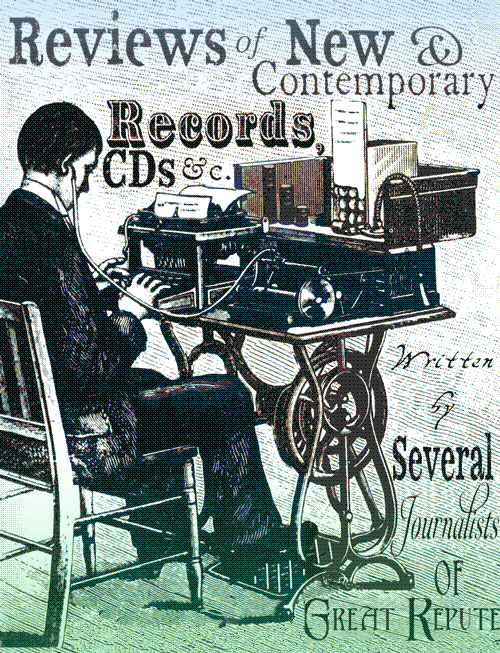 |
|
| = August 2012 = |
|
|
| Mugstar |
| Brother JT |
| The Good Shepherd |
| The Driftwood Manor |
| Cubs |
| timMOTHeye |
| Dead Rat Orchestra |
| The Lucid Dream |
| Cranium Pie |
| Nick Nicely |
| Pretty Things |
| Om |
| Run Over by an Elevator comp |
| Rodriguez |
| Ulver |
| Dollboy |
| |
| |
| |
| |
| |
| |
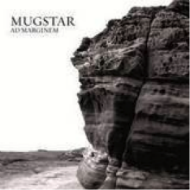
Home |
MUGSTAR – AD MARGINEM
(Limited edition LP/DVD from Agitated Records www.mugstar.com )
Here, then, is the fourth album from Liverpool psychedelic rangers Mugstar for whom regular browsers will know we have something of a soft spot here at the old homestead. Eschewing the driving rhythms and motorik beats of “Lime”, “...Sun, Broken” and their expertly directed Hawkwind tribute “In Search of Hawkwind” (to which they contributed two tracks that give the originals a good run for their money) Ad Marginem’s more restrained collection of slow-burning and faintly disturbing instrumental soundscapes are bound to draw comparison with Dead Sea Apes’ “Lupus” (no bad thing). It’s unsurprising to learn that the album is the score to a film –eponymously titled, no less - hence my impression prior to reading the blurb (that’s as close as reviewing gets to becoming an extreme sport, by the way) of this as an accompaniment to some left-field film-lab production of the type that occasionally receives a one-off showing in a private cinema club at 2.00 a.m. attended by nine people all somewhat worse for wear on whatever has taken their fancy (or so I’m told, readers).
The problem with soundtracks is that when stripped of the visuals something can become lost in translation and I suppose this is to some extent true of Ad Marginem which apparently accompanies a black and white film of various locations in and around Liverpool and is co-credited to band member Neil Murphy. However, unlike your average (surely not) Morricone release or the flip side of Yellow Submarine, for instance, all tracks bear scrutiny in their own right, especially if you think more in terms of “Live at Pompeii” than “Live r pool”, as there really is a big tilt in a Floydian direction here, albeit one which exudes a more palpable menace than even some of the Great Ones’ brooding turn of the 70s meanderings. Clocking at less than 35 minutes this is a short album by any standards, but is just long enough and sufficiently intriguing to keep commanding one’s interest and so not outstay its welcome, There is nothing much to distinguish one piece from the other except that “Island/Red” does kick into life part of the way through and offers glimpses of familiar Mugstar territory as well as those Hawkwind influences. The closing “Rite II” also casts off the simmering restraint in a form of clothes-rending wild abandon which could be interpreted as musical code for “boy, I needed that”.
Inevitably given Mugstar’s pedigree and talent, and despite this slight departure in style, Ad Marginem is a proficient enough work. However, unless the film takes off commercially or attains some notoriety they are for now at least destined to remain a buried national treasure. A fifth album is reputedly in the offing for which we wait in eager anticipation. (Ian Fraser) |
| |
|
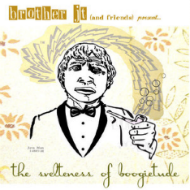
Home |
BROTHER JT (AND FRIENDS) –THE SVELTNESS OF BOOGIETUDE (CD from www.brotherjt.com )
Well I ask you, how can you resist a title like this? I’m ashamed to admit I’d not heard of Brother JT prior to receiving this from our esteemed Reviews Editor more weeks ago than I freely care to admit (apologies to both artist and Site Masters for that). This is obviously my loss as it would appear that John Terlesky of Easton PA, US of A is another of these prolific and highly talented sorts who frequently grace our virtual pages here at the Big T., and is indeed an old friend of your esteemed Editor who once famously played a Terrastock festival with his entire band dressed in Star Trek uniforms. But, I digress. A mixture of acid-jazz, Zappa-esque pastiche, bubblegum pop, a what-if collaboration of Arthur Lee and the 13th Floor Elevators (jug not included) and shot through with an impertinence and inability to keep a straight face that can be both entertaining and at times irksome, The Sveltness of Boogietude is one of the most schizophrenic releases it’s been my pleasure to listen to for fair while. That is both its charm and dare I say its weakness as just occasionally you wish that John would keep off the cheap cola (that’s got to be it, right?) and concentrate on nailing fewer grooves. Conversely, you sense that this would diminish the charm and raison d’être of the Brother JT concept and as criticisms go it really is small beer.
Lyrically this is all completely bonkers. The introductory “Brother JT” –now THIS is how Zappa ought to play Zappa, complete with falsetto “girl” backing vocals – for example managers to rhyme “Brother JT” “cutey” and “monkey” all in the same sentence. It’s as knockabout, and as off the cuff you can hope for (or dread, if you’re an old curmudgeon). This one track alone sounds like one of those old Michael Moorcock books read, with different time and space bleeding into one and other, yes it’s Zappa, but are those Hawkwind’s oscillators twittering away like they’re doing a runner from the Silver Machine Sanatorium? “T Rex Blues” might exorcise the need to indulge in glam fetish but is also a glorious four or so minutes of driving boogie with a short searing guitar break some three minutes 20 seconds in. “Gliding” is the first of those Arthur Lee songs, deceptively innocent and simple sounding with gorgeous chorus and middle eight and tasteful string arrangement. “Be A” takes the Lee template further into “bummer in the summer” territory (lyrically, “tanker”, “anchor” and “Ravi Shanker” turn up in the same line here). The only thing missing is the Mariarchi brass and it would be the most perfect homage. As it is, JT has an unerring knack of capturing styles and walking the tightrope between tribute and lampoon. Other highlights include the woozy psych-rock of “Many Man Smoke”, the pastorally psilocybin- sounding “Green Curtain” (think of the immediate post-Barrett Floyd of Cirrus Minor or Julia Dream) and the wig-out that brings the scat-jazz of “Flotsam and Jetsam” to a chaotic close. There is also a hidden track, a nameless and priceless psychedelic drone of hypnotic proportions soaked in Eastern promise or something equally indelible that shows what JT and his buddies are frighteningly capable of when they decide to quit clowning
“And There’s More”, as some appalling comedian used to say, and in truth there’s something for practically everyone here (well OK it’s a little light on hip-hop and barbershop quartet singing). It’s a compete hoot from end to end and a damn fine way to low out the cobwebs after another day in Dullsville. Like a film with a lot of peripheral, background action it takes a few attempts to appreciate everything that’s going on but it is well worth persevering. Welcome, then, to the strange and wonderful world of Brother JT (and congratulations to all of those already in residency). (Ian Fraser) |
| |
|

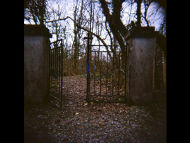
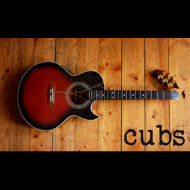
Home |
GOOD SHEPHERD - AH... GOOD THE SEA
THE DRIFTWOOD MANOR - DOMINICAN BLACK ABBEY
CUBS - WILLOWFIELD
(all 3 inch CDs from www.rustedrail.com)
Originally part of the United Bible Studies collective, the musicians on show here prove that they have plenty to say in their own right, with all three discs brimming with emotion, beautiful songwriting and quality that is hard to ignore.
Basically the work of Duncan Poyser, “Ah...Good The Sea” contains five perfectly formed tracks that are gently pastoral in flavour, their delicate melodies and instrumentation taking the listener on a journey through rolling hills, waving meadows and lazy clifftop days. Opening song “Sunday Morning Son” drifts in like a hazy morning, notes dancing in the sunshine paving the way for a haunting vocal line that will slow your heartbeat in an instant with its West-Coast vibe. On “Flown the Other Side” the mood is maintained, acoustic songwriting at its finest, whilst “Slow Down” has traces of John Martyn in the laid back jazzy percussion that underpins its simple melodic pleasures. Shimmering in a cloak of gentle effects, “The Beast” is softly spoken Psych-Folk, that fades like a dream before “Cold Swell Rising” brings it all to a close, melting out of the speakers to coat you in bliss, ending a damn near perfect collection that will become an essential part of your collection.
Equally enchanting “Dominican Black Abbey” is a six track collection of acoustic loveliness Featuring Eddie Keenan and a selection of friends including Neil Fitzgibbon whose fiddle adds a wonderful layer of emotion to the opening title track. On “I Could Sense a Violent Death” electric and acoustic guitars create a sombre atmosphere that matches the lyrical content, reminding me of Stone Breath in its dark approach. This dark approach remains throughout the disc with “Like Parting With Ghosts” using the sound of a Bouzouki to evoke a sense of loss, the fiddle again adding to the ache, a guitar splashing sound over the top creating another layer of atmosphere to one of my favourite tracks on the disc. Simpler in its construction, “Trees Shaped by the Wind” is a beautiful, haunting song that lingers in the mind, as does “The Blackest of Silks” another acid-folk classic that shines with elegant light, a rattling feedback driven electric guitar adding anger and bite to the track.. Finally “There are Signs” leads us out in a gentle procession, reminding me of Simon and Garfunkel reborn as wyrd-folk idols, rounding off another damn near perfect album that is as essential as the last.
Slightly more experimental in its textures “Willowfield” contains ten tracks featuring Aaron Hurley amongst a host of others including Eddie Keenan (bouzouki) and James Rider (acoustic guitar). After the title track, complete with vocal samples that set a mood of sadness, regret and forgiveness, “Lowering of the Ropes” sees guitar, mandolin and bouzouki dancing together creating glorious melodies that sing out across the room, carrying the beautiful harmony vocals to another realm. With harsher sounds and spoken word running through it “Foxglove” sounds like it could be part of the Village Thing imprint from the 70's, whilst “Hollycroft” is a brief slice of ghostly ambience that paints strange pictures in your mind.
After the pastoral sweetness of “Passages from a Drunken Notebook”, more spoken word samples can be found on “Sun Plots” another eerie slice of Psych-Folk that glistens with vitality before the mood is changed with the more ethereal and experimental “When Skies Split Open” one of three tracks to feature the lovely vocals of Cecilia Danell. Equally awash with sonic textures (and a spoken word sample), “Stonyford” threatens to drift away in a cloud of echo/effects but is grounded by the acoustic melody that walks beneath the noise, whilst “The Last Day of Spring” seemingly ties all the elements of the collection together perfectly to create my favourite track on the disc. Finally, “with Candles we walk” mirrors the opening track in its sounds taking the listener full circle and completing yet another damn near perfect collection, just buy all three and make yourself very happy. (Simon Lewis) |
| |
|
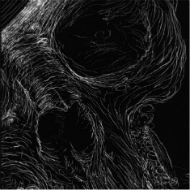
Home |
time MOTH eye – UNDEATH
(CD and illustrated book limited to 200 copies/Download from Crucial Blast www.crucialblast.net )
time MOTH eye - as many of you will know - is one Tim Renner, former Terrascope illustrator and mainstay of cult acid-folk pin-ups Stone Breath. Complete with chapbook full of macabre drawings, this solo offering, as might be gathered from the title, is chllingly gothic with a gargantuan letter G. This is Drone Folk in the same spectral vein as Renner’s parent project but is, if anything, spookier and more testing. The nine dark compositions full of portent, textured vocals, moaning synthesizers and the odd sawing cello, not to mention a church bell - you know you’re in for a good one when there’s a church bell on the opener - are indeed nocturnal incantations to trouble the soul and yet somehow raise the spirits (by which I don’t mean to infer that there’s any necromancy afoot, and if you’re thinking Doris Stokes, forget it).
A ghostly caricature of Gregorian chanting, solemn and ceremonial, and showcasing time MOTH eye’s predominantly one-octave vocal range, this dense and unsettling collection of tunes from the twilight zone might have begun to sound a bit two-dimensional were it not for well-judged forays into more tuneful yet still creepy, graveyard realms, beginning with the rather captivating “Witchwalker”, which segues into “Sleep” a grotesque yet strangely appealing parody of a lullaby. On “Footsteps Fall”, time MOTH eye is joined in a chanting duet by Stone Breath collaborator Brooke Elizabeth and is in fact practically catchy, with the hummable chorus refrain: “The answer is lost to me”. So I’m in good company, then, but at least if I’m lost in strange and dangerous faerie world then I’m really beginning to enjoy myself. By the time Renner’s woozy monotone pierces the sepulchral droning of “Chrysalis Shroud” I feel as if I’m witnessing a recital by Dead Can Dance on mogadon, a feeling only enhanced by the album’s closing and arguably standout track “Sleepwalker/Dreamwalker” during which, and paradoxically given the title, the vocals in fact sound relatively animated.
A notch or two up on the recent Stone Breath release “The Aethric Lamp”, which in itself is a bit of a testament (old, of course) if you are inexplicably and inextricably drawn to the gloom or just enjoy falling over headstones in the pitch black then this will be right up your unlit, mist-wreathed alley. Nine tracks of terrible beauty await those who dare enter the charred and mouldering musical crypt of Tim Renner. The man’s a treasure and in this Olympic year if there were such a thing as a medal wrought of black gold then you sense that would be a most fitting accolade (Ian Fraser) |
| |
|
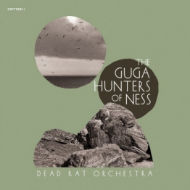
Home |
DEAD RAT ORCHESTRA - GUGA HUNTERS OF NESS
(CD from www.criticalheights.com
http://www.deadratorchestra.com/home.html)
Every year the community of Ness, on the Isle of Lewis, are granted exemption and allowed to hunt young Gannet, known as Guga, in the traditional manner. Ten men brave the elements and live on remote island amongst the ruins left behind by monks that lived there a thousand years before. Recently this story has been captured on a BBC documentary and it is the soundtrack to the film that is to be found on this haunting and compelling album. (http://vimeo.com/17151144)
Comprising three musicians - Daniel Merrill, Robin Aderton and Nathaniel Mann - the Dead Rat Orchestra spent two weeks in a studio with the documentary maker Mike Day, trying out ideas and researching the traditional music of the area. This hard work and dedicated approach has certainly paid with the nine tracks on show awash wit emotion and atmosphere, capturing the desolation and stark beauty of the landscape, the longing for home and the thrill of the actual hunt.
Opening track “Joy/Sorrow (Sula Sgeir)” sets the scene beautifully, an aching, expansive drone with a metallic yet organic rhythm, that evokes the sea and men rowing away from home, building the tension with stuttering fiddles and clever arrangement. Built around a poignant banjo “Dods Banjo” is a moment of quiet reflection that is delicate and still, that stillness underpinned with uncertainty as the rise and swell of “Black and White Houses” fades in and out, a brief but perfectly realised snippet of sound.
Moving on “The Heather Isle” is at the heart of the album, the ten men arriving at their destination determined and focused, yet at the same time unsure of the outcome and far from home. This dichotomy is captured in the music a tear-stained drone that gains purpose and vitality with the arrival of a steady pulse and whispered melodies, a truly evocative and powerful piece that remains in you memory long after the track has ended. Such beauty and passion is also present on the melancholy strains of “The Geshin and the Guga” which reminds me of United Bible Studies in the way the musicians can wring every ounce of emotion from the composition and arrangement, the piece followed by “Sunrise” a softer guitar track that is gone in an instant.
Featuring field recordings of traditional psalm singing performed by the Ness Church Choir, “Salt Slide” takes the emotion and sadness to new heights, a lament for the disappearance of traditional ways of life, as if ghosts walked amongst the notes and melodies, a spectral drone that finally fades like smoke across and evening meadow the mood lifted by the arrival of banjos and hand-claps, a sudden celebration of spirit and a feeling that we are still here. Heralding a return, “Dods Banjo (Ness Social Club)” makes a brief re-appearance before “Guga End Theme” leads us out, a reflective slightly sorrowful track, that moves so slowly, giving the listener time to think, to make sense of the world around ending an album that becomes richer and more powerful on each hearing, now I need to track down the film. (Simon Lewis) |
| |
|
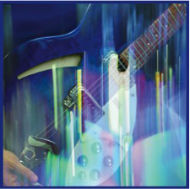
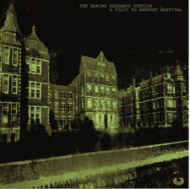
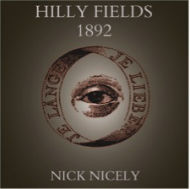
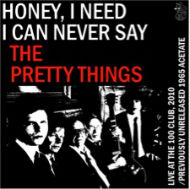
Home
|
THE LUCID DREAM – “HITS ME LIKE I’M STONED” c/w “TRY A LITTLE SUNSHINE”
CRANIUM PIE AND THE BAKING RESEARCH STATION – “A VISIT TO NEWPORT HOSPITAL” c/w “QUEEN STREET GANG”
NICK NICELY – “HILLY FIELDS 1892” c/w “HILLY FIELDS (THE MOURNING)”
PRETTY THINGS – “HONEY I NEED” c/w “I CAN NEVER SAY”
(From Fruits de Mer Records www.fruitsdemerrecords.com )
It’s always a huge pleasure to hear from 7 inch vinyl single specialists Fruits de Mer and this latest skew-if assortment of oddities are particularly welcome.
Cumbria’s The Lucid Dream can be plotted along the same fault-line as 80s fuzzed-out drone monsters Spacemen 3, JMC and their immediate, pre-Britpop successors but with better hooks, a keener sense of melody, some acid-drenched guitar and an exuberance that lifts the gaze from ones shoes to the heavens. The self-penned “Hits Me Like I’m Stoned” is nicely counter-balanced by a primo slice of 60s psychedelia in the form of Factory’s advertising standards bothering “Try A Little Sunshine”. A neat little package that represents a welcome blast equivalent to a couple of hundred mics of synthesised expansion of consciousness and, I daresay, a lot healthier.
Crazy name, crazy people alert. The first few minutes of Cranium Pie and The Baking Research Station’s “A Visit To Newport Hospital” sees my finger poised ominously over the prog rock intruder-alarm button (it serves the same purpose as the bat phone but looks and sounds like an old Hammond organ). It’s only when we’re a third of the way through that the penny, in this case a 1d coin, finally falls through the slot and I realise where I’ve heard this before. Yes reader, you’ve probably got the drop on me already and are probably muttering “Egg. “Polite Force”, 1970, read the publicity brief you idiot” and shaking your head disairingly, but such is the deconstruction and the heavy treatment meted out here...Well feeble excuse aside, one’s finger duly returned to keyboard and two repeat listens later and yes it’s good. Not half as good, though, as the “b-side” which is another deep sea dive into Davey Stewart’s locker in the beguiling and shifting form of Arzachel’s “Queen Street Gang” and which is pretty scary in a compelling way that commands repeated listening. Suffice to say it’s on the iPod, taking pride and place among this month’s best new stuff/old stuff old/new stuff compilation. Hammond organ never sounded so good.
A change of style and pace now, courtesy of Nick Nicely’s “Hilly Fields 1892”, originally released in 1982 and a re-visitation 30 years later in the form of “Hilly Fields (The Mourning”). The mother version is quite simply the missing track from the Beatles psychedelic oeuvre and a perfect precursor of XTC’s pastiche psonic pfunsters Dukes of Stratosphear. The ”b-side”, on the other hand, is a stripped down, almost desert folk interpretation like it could be the twisted soundtrack to an unfinished 60s exploitation movie or lysergic inspired spaghetti western. So very different, and yet there it is, that same disdainful female voice, dismissively intoning “pimply little post boy” and that same strong melody materialising through the spectral, sonic haze. This is a gem and you’d be foolish to miss the opportunity to become acquainted or in the case of those who’ve passed this way before, re-acquainted with it.
Last and possibly least mesmerising at least in terms of sonic wizardry but still giving proceedings a welcome kick up the pants are the Pretty Things – yes those Pretty Things. In their day the finest exponents of British R and B, Phil May, Dick Taylor and newish mates serve up a live rendition of “Honey I Need” taken from their first album in 1964 but recorded just a couple of years back at the 100 Club in that there London and which is available from their gigs as well as FdM and co-conspiratorial retail outlets. Short and reassuringly sharp after all these years, that 100 Club gig must have been some occasion. The flip side throws up a real find, taken from a 1965 acetate demo and entitled “I Can Never Say” and complete with such a chugging and catchy motif and tasty mouth harp that you wonder why it took so long for it to see the light of day. Well god things come to those who wait, evidently.
All these Fruits de Mer singles are available on coloured 7” vinyl only and are limited to 800 copies except the Pretty Things single which has a pressing of 1200
Ian Fraser |
| |
|

Home |
OM – ADVAITIC SONGS
(CD/LP from Drag City www.dragcity.com )
Om’s crushingly loud doom metal take on drum and bass music has always been something of a guilty pleasure of mine. However when all was said and done they tended to sound pretty much what they were – stoner titans Sleep without the guitar, with just Al Cisneros’ rhythmic chanting and molecular-scrambling bass underpinning Chris Hakius’ strenuously aerobic battery workouts. All in all, you had the sense they were ploughing a very narrow furrow. I mean, what more can you do with four strings, a bass register and a set of drums?
Well, a fair bit more than you might be forgiven for expecting, to be honest. Now on Drag City after stints on Holy Mountain and Southern Lord and with Grails’ Eric Amos now firmly installed behind the drum kit in place of Hakius, Advaitic Songs is not only Om’s longest release (a still compact 44 minutes) but their most expressive and ambitious. It helps that they have acquired a third man in the shape of Robert Aiki Aubrey Lowe as their on vocals, keyboards, tambura and percussion, while the sound is further fleshed out by intelligent and effective deployment of cello and flute.
Working past what has become trademark iconic religious imagery of the cover art, the next thing to hit you are the song titles –five of them, almost a Ramones-like cornucopia in comparison with previous efforts and most of which give a foretaste of what is to come – “Addis”, “Gethsemane”, “Sinai”, “Haqq Al-Yaqin” – all a pretty obvious camel’s nod towards the Middle Eastern influences that are in abundance herein. “Addis” is a mystical, almost sensuous slow burner and so untypical of anything else I’ve heard from them, and those same Arabic strains permeate the rest of the album. What marks this out as still indisputably Om, though, is Cisneros’ rather monotonous, yet fitting, intonation, but while his vocal delivery is never going to be particularly expressive, the depth and texture coupled with Amos’ more intricate, musical style than that of his predecessor more than compensates for this on cuts like “Gethsemane” and “Sinai”, the first part of which somehow manages to evoke Gong’s “Magic Mother Invocation”. Best of all is the closing “Haqq Al-Yaqin” with a melody you can practically hum and the band exhibiting such exquisitely transcendental restraint that one can only marvel at.
Subtle and sophisticated, refreshing and revelatory, having missed 2009’s stepping stone God Is Good, I’ll freely admit that I didn’t see this one coming at all, and that I guess is what makes it all the more pleasurable. Far from being one-trick ponies, Om have revealed on Advaitic Songs a musical palette you’d have been hard pressed to have imagined from their earlier output. While some elements of their traditional stoner fan base might well lament the absence of much of the old thud and blunder, this more restrained 2012 incarnation is pursuing an altogether more interesting musical direction which deserves an appreciative and wider listenership.
Ian Fraser |
| |
|

Home
|
VARIOUS ARTISTS – RUN OVER BY AN ELEVATOR
(CD from Bearsuit Records www.bearsuitrecords.webs.com)
The fearlessly inventive and always exciting Bearsuit label returns with a collection of experimental electronic works spotlighting the best and brightest of the (predominantly) Scottish and Japanese electronics scene. Welsh composer/musician Nick Auskeur starts things off with a creepy instro (‘Open Ground’) that successfully welds Bernard Herrmann’s Psycho-styled minimalist terrors with a creepy, skincrawling backdrop, while fans of the distorted, angular pop of Terrastock veterans Pop-Off Tuesday will be right at home with the glitch, fractured soundscapes raging through Japanese duo N-Qia’s ‘Managemente’. The members of international trio Anata Wa Sukkari Tsukarete Shimai hail from England, Scotland, and Japan and hide behind intriguing pseudonyms (“_”, “Gnomefoam”, and “Bunny”, the latter of whom appears later in the set in his Bunny & The Electric Horsemen guise, which effectively marries sweet vocals to cinematic backgrounds on ‘Chikyu Wa Mawaru'.) But here, the trio deliver ‘Lost in the Forest of Blank Sportswear’, which is as alluringly enigmatic as the folks behind the hypnotic sounds.
Japanese electronics whiz Ememe offers a hard-driving, shambolic collection of beats, blips, and catchy electro bursts that perfectly encapsulate its title: ‘Mosquito Bites’. Annoying insects, thankfully, are not at the center of Japanese/Scottish combo Haq’s sensually, sinewy ‘Bees In My Feet,’ which grafts eerie violin strokes and ominous piano notes onto a haunting vocal somewhat reminiscent of ‘Rosemary’s Lullabye’ from the soundtrack to Polanski’s Rosemary’s Baby. Whizz Kid are another international duo (Belgium/Scotland) and their meandering ‘Trapeze’ will have you swaying in the breeze under its hypnotic spell and ‘Descending’ is an intriguing mix of pop and classical sounds from Emlp (aka, Electronic Music Learning Projects), masterminded by Mark Rossi, who’s currently completing his PhD in Sonic Arts at Queens University in Belfast.
The truly international affair continues with ‘Matamorphosis, pt. 1’ from Poland’s Pleq (Bartosz Dziadosz). He combines slowly dissolving drones with creepy glitch effects – it reminds me of Roger Waters’ contribution to Ummagumma about those furry animals gathered in a cave grooving with a pict! In fact, quite a few of these selections seem inspired by Waters’ experimental offering – who knew he was 40 years ahead of his time?!?
We’ve enjoyed previous efforts from Harold Nono and his return with several projects: Taub, with Germany’s Me Raabenstein (‘Foot-5 on the Flipside’), the aforementioned Haq with Japanese duo N-Qia, and Hidekazu Wakabayashi (‘Family’) is a welcome treat. All three are amongst the more accessible offerings, with tender pianos, soft, winding guitars, and quite lovely ruminations bubbling under the not-always-cozy surface. The Frozen Vaults is another international collaboration (US/Poland/Japan) that is co-produced by Pleq’s Bartosz Dziadosz (whom we heard from earlier). Their ‘First Moments’ combines piano, cello, and violin to hauntingly eerie effect – the ensuing cinematic soundscape is as soothingly absorbing as it is thousand-yard-stare reflective. Like the equally gorgeous and meandering music box tune ‘Comp. No. 209’ from Canada’s Antonio De Braga, it is a personal highlight on a set of many.
So if your tastes run towards experimental electronic soundscapes with the occasional glitchy veneer wrapped around the odd haunting melody delivered with disembodied voices, try this on for size. (Jeff Penczak) |
| |
|
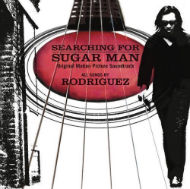
Home
|
RODRIGUEZ - SEARCHING FOR SUGAR MAN SOUNDTRACK
(LP on Light In The Attick; CD on Sony Legacy Light In The Attic/ Legacy)
Searching for Sugar Man is a new documentary that relates the story of the obscure Detroit singer/songwriter Sixto Rodriguez and the liberating and rejuvenating effect his early ’70s albums had on the pre-Mandela anti-Apartheid youth movement in South Africa, where Rodriguez became a household name and hero. This collection of tracks from those two albums, 1970’s Cold Facts and 1971’s Coming From Reality (both originally released on Sussex and available separately – in their entirety) plus three tracks recorded in the years following those initial releases form the soundtrack to the documentary and provides a fine introduction to Rodriguez’ mystique.
There is an aura of “Catch-22” around the present release, as anyone succumbing to its charms will probably want the full albums, essentially rendering this purchase superfluous. However, without sampling the current purchase, one would have no way to gauge the economic decision to purchase the full lengths on recommendation and reputation alone. But let’s take the present release at face value. First, the documentary is getting a lot of publicity in certain corners (I’ve heard several cuts from the album along with a brief intro to the documentary and Rodriguez himself on BBC Radio6), but it’s possible that more people will purchase the album (on Light in The Attic) or CD (on Sony Legacy) without having seen the film. I’m in this group, so I can’t really review the album for its purely “soundtrack” qualities – how the chosen songs relate to the images or the dramatic effect of certain songs, etc. So I’m reviewing the release as a sort of Rodriguez’ Greatest Hits collection.
Musicologists will be disappointed in the non-chronological sequencing of the album, which randomly intermingles tracks from the two albums, thereby eliminating the ability to track Rodriguez’ growth as a songwriter/performer. Music lovers, however, will thoroughly enjoy the incredible good fortune he had to work with two of our finest guitarists (Dennis Coffey – who also co-produced – on the debut, Chris Spedding on the follow-up), as well as have the Detroit Symphony provide strings (on the debut)!
The title track is a folk classic – think Bob Marley-meets-Richie Havens covering Donovan! Effective use of echoed vocals as the song fades out add an indelibly haunting effect. Subtle horn arrangements and tinkling vibes [i.e., xylophone] effects highlight ‘Crucify Your Mind’, which effectively imparts a P.F. Sloan/Barry McGuire ‘Eve of Destruction’ vibe. Rodriguez continues to impress with the Dylanesque ‘Cause,’ a politically-charged plea with some unforgettable lines, such as “So I set sail in a teardrop/And escape beneath the door sill/Cause the smell of her perfume/Echoes in my head still.” Wow!
Further along, imagine if Dylan (instead of Country Joe or Leonard Cohen) had written a love song to Janis Joplin and you’ll get the effect of ‘Janis’, while the title, alone, of ‘This Is Not A Song, It’s An Outburst: Or, The Establishment Blues’ gives all the clues you’ll need as to its musical pedigree. One thing that emerges to these ears is that these recordings belie their origins – there is no gritty, funky, street-smart soul or R&B vibe or Motown pop spinning within their grooves. Rather, this is an intelligent, occasionally sentimental collection of superior folk tunes, effortlessly flittering on butterfly wings from politically-tinged polemics to melancholic love songs – ‘I Think of You’ could easily have sat on a Bob Lind album – to astutely observed slices of ghetto life (‘Inner City Blues’ and the visually impressive epic ‘Sandrevan Lullaby – Lifestyles’, which is not unlike seminal Al Stewart at his bedsitting best). Flute, string, and soft horn flourishes only add to the listening experience. And I’ll be damned if ‘Street Boy’ doesn’t sound like an outtake from an early James Taylor album, and there’s a rugged, Lou Reed-channelling-Arlo Guthrie swagger (or is it the other way ‘round?) to ‘A Most Disgusting Song’.
So, while it may seem strange to say it, I recommend that you do NOT buy this album. It’s so good, you’ll want to seek out and pick up the complete full length reissues on Light In The Attic. If this introduction is any indication, you’ll want to hear Rodriguez’ complete output and you’ll thank me for saving you the frustration of having to buy these songs twice! (Jeff Penczak) |
| |
|

Home |
ULVER - CHILDHOOD'S END
(CD / LP www.kscopemusic.com)
Beginning as exponents of black metal, Norwegian band Ulver have expanded and refined their musical style over the years to take in dark ambience, industrial, electronic and symphonic elements. On this disc however they revert back to the sixties and cover a host of obscure and not so obscure 60's Psych classics and do so with considerable skill and feeling. Before you cringe too much at the idea of dark metal covers of some of your favourite songs let me put you at ease, the band remain true to the spirit and sound of the original tunes whilst still managing to make them sound fresh and giving them something of their own spirit, let's just dive in.
Opening with “Bracelet of Fingers”, not the most obvious Pretty Things cover, Ulver manage to convey the atmosphere of the original especially on the slower middle section, this same swirling ambience also found on “Everybody's Been Burned”, a favourite song around here, so I am pleased that I am able to enjoy this excellent version. Moving into more obscure pastures, covers of “The Trap” (Music Machine) and “In The Past” (We the People) prove the band know their Psychedelic onions, the care and attention given to the music adding to the feeling that this album is a labour of love, the band having a good time playing the music they obviously love, with the latter being particularly enjoyable.
Whilst you will never beat Jefferson Airplane at their own game, the version of “Today” found here runs them pretty close, the same west-coast ambience is present and, if this turned up on a collection of rare sixties singles, you would not question its authenticity. This then is the album's strength, the ability to sound as if this is actually a disc recorded in the sixties, the band paying attention to detail, ensuring the sound is right, the songs brimming with passion and emotion and a little bit of themselves rather than being slavish copies of the original.
Containing 16 tracks, the music never dips in quality with “Can You Travel in the Dark” (Gandalf), “Dark is the Bark” (Lefte Bank), and “I Had Too Much To Dream (Last Night)” being particularly enjoyable to these ears, whilst “Lament of the Astral Cowboy” (Curt Boettcher) is a revelation, meaning I now have to hunt down the original from 1973. To end the band induce a haze of incense and hash on “Where is Yesterday” (The United States of America), a swirling kaleidoscopic tune that is the perfect end to a excellent collection that allows you to listen to familiar tunes with fresh ears. (Simon Lewis) |
| |
|

Home |
DOLLBOY - FURTHER EXCURSIONS INTO THE ULU
( CD from http://news.kookydisc.co.uk/)
Oliver Cherer, A.K.A Dollboy, plays beautiful pastoral psychedelic folk, blending Caravan and Tuung into a delightful mix and adding a sheen of Nick Drake wistfulness to complete the recipe. With the emphasis on melody and harmony, sweet tunes are augmented with some fine playing and warm electronics that add texture to the proceedings without ever sounding harsh or clinical.
Opening with the Beatle-esque melody of “All of the Stars Pt1”, the album quickly reveals its charms, with “Seven Again or Dust” getting into a lazy groove, sonic sunshine of the highest order, getting your head nodding gently as the music washes over you, reminding me of the work of Lone Pigeon, a rather fine guitar solo adding sparkle to the song. With a soft Eastern feel, “Alice in Clear Water” is a whispered Psych-Pop gem featuring a lilting flute and wonderful vocals.
Given its more laid back electronic vibe “Hellicopter/Microbes could almost be dubbed Folktronica, but as you hoped it would sound, with “The Ventriloquist” also blending acoustic and electronic to subtle effect, everything arranged and produced to bring out the melodies in the piece. The track taking a slightly creepy road with the introduction of some manic laughter towards the end.
With a full drum-kit on show, “Love Your Mother” picks up the pace just a little, although mellowness still rules especially when the ambience of “Arctic Winter” follows on, a delicate and sparse song, the vocals reminding me of Thomas Dolby at his quietest, the tune displaying some skilful vocal lines that are blended to maximum effect.
Featuring Anne Garner on Flute and the Banjo of Jack Hayter, “No Trubba” is the closest to traditional folk that this collection comes, although this is still folk with a Canterbury connection and modern sensibilities, especially in the bright and warm production of the disc, something that really adds to the enjoyment of the songs.
With a twinkling piano riff and wonderfully whimsical lyrics, “A Golden Age” is a contender for the best song Caravan never wrote and would happily sit amongst the rest of “Land of Grey and Pink” and while that may seem to much like plagiarism to some, for me it is a compliment, the song equally at home on this collection as well.
To end we return to the beginning as “All of the Stars Pt2” leads us out after a delightful evening by a cosmic fire, gently tripping to the songs of Dollboy, a pure delight from start to finish. (Simon Lewis) |
| |
|
|
 |
|

